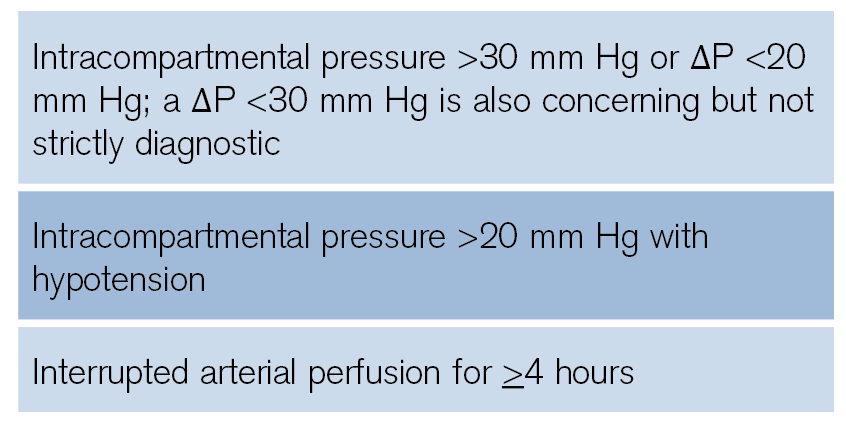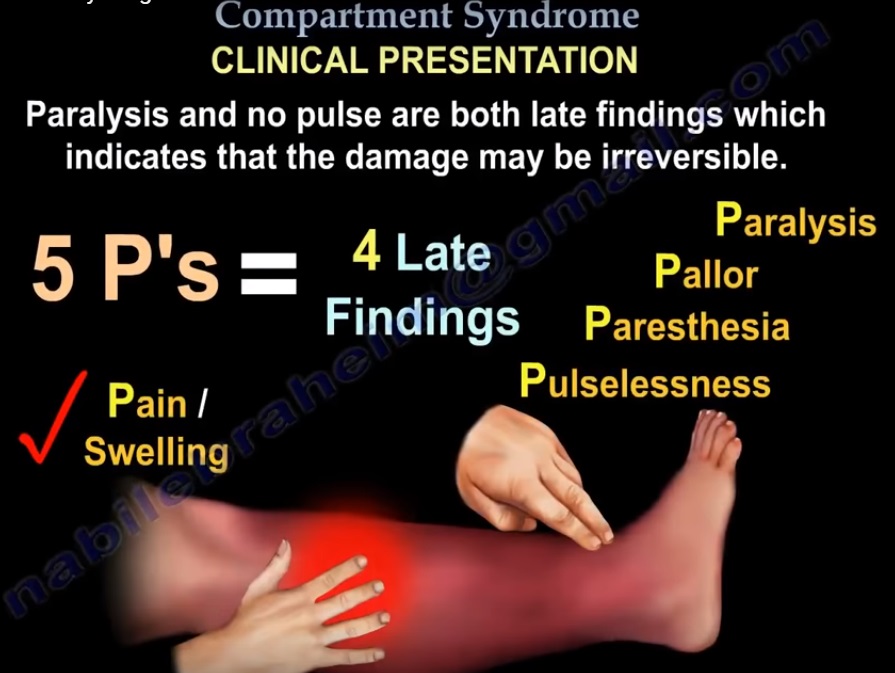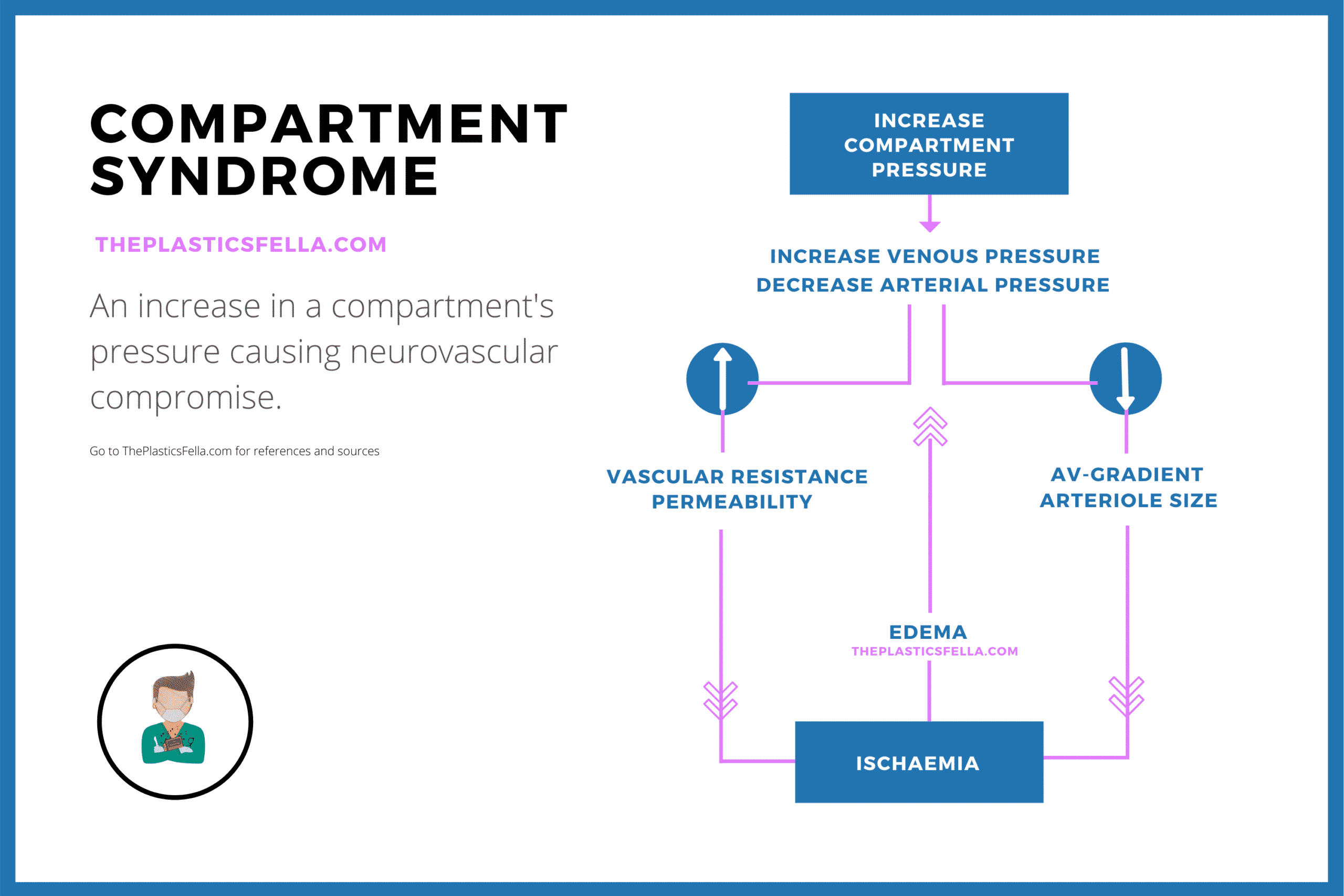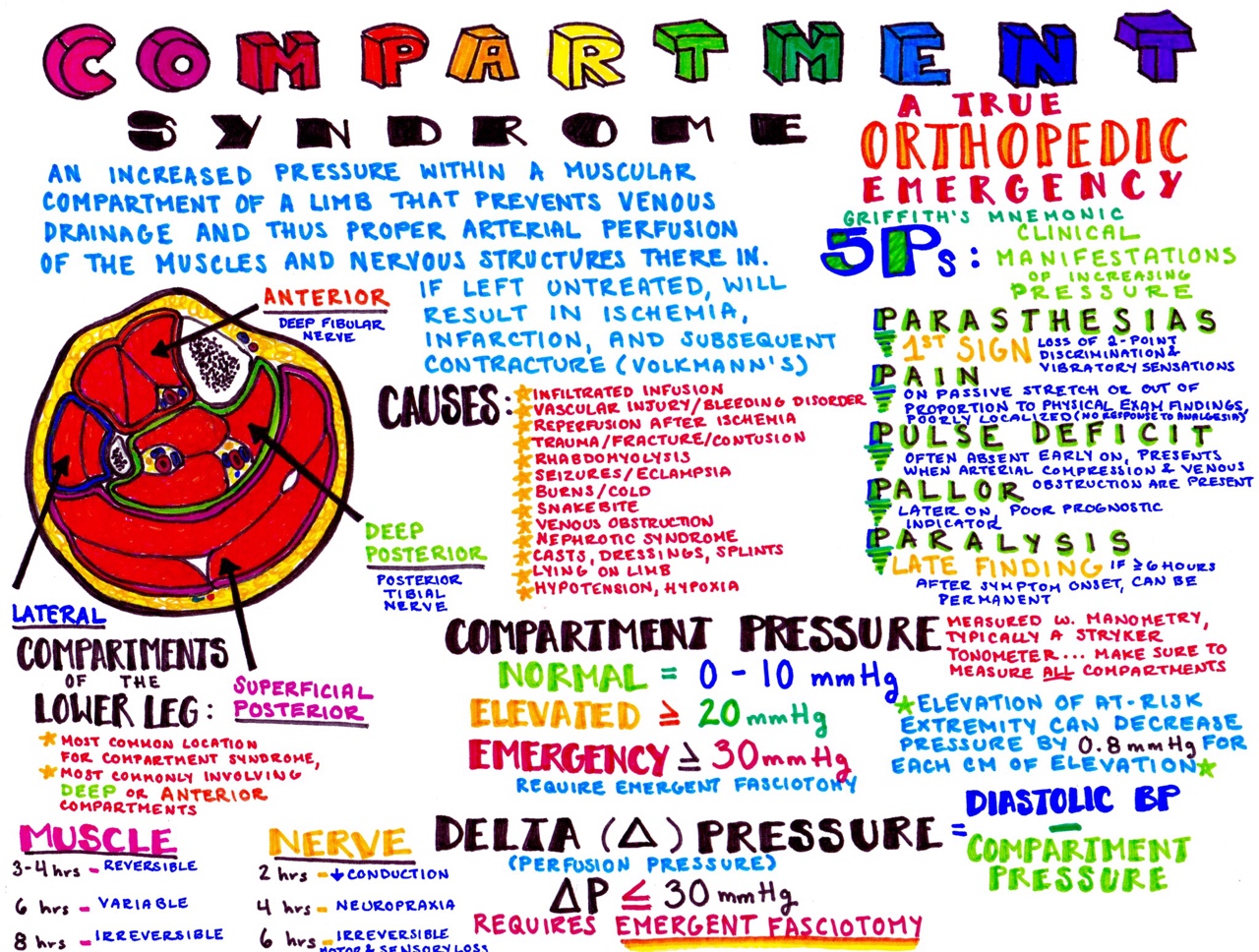Neat Info About How To Diagnose Compartment Syndrome

In suspected abdominal compartment syndrome, a pressure monitor can be inserted into the bladder through a urinary catheter.
How to diagnose compartment syndrome. To help relieve the pain of chronic exertional compartment syndrome, try the following: A physician can diagnose an individual's compartment syndrome by the removal of casts and other restrictions to evaluate the compartment in question. How is compartment syndrome diagnosed?
Clinical signs of an impending muscle compartment syndrome include tenderness and induration of the affected compartment, increase in the pain on passive muscle stretching, possible. In order to diagnose compartment syndrome, doctors at nyu langone perform a physical exam and a test to measure the pressure inside the muscle compartments. A proper diagnosis of compartment syndrome usually requires direct measurement of “pressures” inside the specific compartment, which is sometimes measured.
The presence of severe pain incomparable to the. Normal compartment pressures are less than 8mmhg. In order to diagnose compartment syndrome, doctors at nyu langone perform a physical exam and a test to measure the pressure inside the muscle compartments.
Although compartment syndrome is a clinical diagnosis, measurement of compartment pressure can be helpful in certain clinical scenarios. The healthcare provider will look for signs you might have something else. A plaster cast or tight bandage being applied to a limb before it has.
Use a syringe to inject the fluid into your bladder. Measuring compartment pressure in an obtunded. The provider will insert a needle into the.
While imaging modalities may help in localizing a cause of the elevated abdominal pressure (bleeding, trauma, obstruction), they do not help make the specific diagnosis of. A healthcare provider will do a few things to diagnose compartment syndrome: If the provider suspects compartment syndrome, youll need a test to measure the pressure.
Compartment syndrome is diagnosed when the interstitial pressure inside a muscle compartment is elevated to a point that exceeds capillary blood pressure. Attach the catheter to a bag of fluid. When the diagnosis of compartment syndrome is suspected, the physician can measure the pressure of the compartment by inserting a needle attached to a pressure monitor.
This test will be repeated so your. Use orthotics or wear better athletic shoes. Advance the catheter to your bladder.
Based on the type of injury and symptoms observed, our doctor may direct you to one of these diagnostic procedures such as: Resting pressures in healthy tissue. To diagnose chronic compartment syndrome your doctor will measure the pressures in your compartment, after ruling out other conditions like tendinitis or a stress fracture.
In addition to the clinical exam and index of suspicion, many surgeons use the delta pressure to help determine the need for fasciotomy. High pressures in the bladder, when there.

















